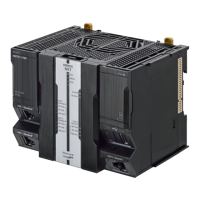2.Terms and Definitions
2
2. Terms and Definitions
The terms and definitions used in this guide are given below.
Explanation and Definition
IO-Link device A device with a sensor or an actuator that can perform IO-Link
communications with an IO-Link master.
IO-Link master A device that performs IO-Link communications with IO-Link devices in
an IO-Link System and that simultaneously functions as a slave for
host communications. The term “IO-Link Master Unit" is used to refer to
a specific unit in this guide.
IO-Link Mode A communication mode of an IO-Link master to perform IO-Link
communications with IO-Link devices.
cyclic
communications
Communications that exchanges data in a fixed period with no need for
programming.
I/O data All target data in cyclic communications with a host.
IO-Link Systems contain the following two types of I/O data.
・
Target data in cyclic communications with a host in an IO-Link master
・Target data in IO-Link devices for cyclic communications with an
IO-Link master
process data I/O data in IO-Link devices.
You can allocate a maximum of 32 bytes of process data in a master.
IODD file A definition file for an IO-Link device.
The parameter settings of an IO-Link device can be made by installing
this file in CX-ConfiguratorFDT.
slave unit A generic name for a device that performs EtherCAT communications
with an EtherCAT master. There are various types of slave units such
as servo drives that handle position data and I/O terminals that handle
bit signals.
An address to identify a slave unit connected to EtherCAT.

